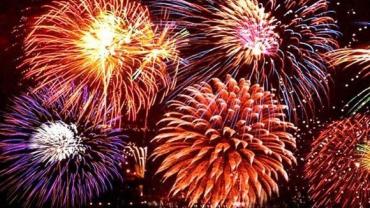
The Fourth of July – a great time for getting together with friends and family to celebrate the birth of the United States and enjoy good company and good food. Whether you like to watch a local parade get your fill at a picnic or barbecue wait for an evening fireworks show or all of these this summer holiday is a way to nourish both body and spirit.
Many of the foods typically served at Fourth of July gatherings can be surprisingly nutritious. Hamburgers made from good quality beef topped with onions sliced tomato and maybe a homemade zucchini relish would provide plenty of protein vitamins minerals and beneficial phytochemicals such as lycopene. Vinegar used in a potato salad or coleslaw dressing offers a digestive aid as well as something that may reduce post-meal rises in blood glucose and insulin levels after eating starchy foods. (Just beware of commercially prepared barbecue sauces some of which are loaded with high fructose corn syrup brown sugar and other dense sweeteners.) Summer fruit salads are another great way to enjoy the holiday while getting a delicious health boost. Tiny raspberries pack a nutritional wallop and there’s no surer sign of summer than the juice of a ripe peach running down your chin. And don’t forget the watermelon! What would a Fourth of July gathering be without this hydrating summer staple?
Even the butter on the corn on the cob is something to be savored. Recommendations regarding saturated fat have been changing over the past few years and the traditional cooking fats of yesteryear such as butter lard coconut oil and beef tallow are reappearing in kitchens and restaurants. As for desserts be wary of store-bought cakes pies and cookies which are typically made with inflammation-promoting vegetable oils and trans fats. For people who prefer to stick to their dietary plans and eat healthy even during holidays treats made with dark chocolate might be a guilt-free option.
The food at picnics and barbecues is only one nice aspect of celebrating summer holidays with friends and family. The therapeutic effects of time outdoors shouldn’t be discounted even if a backyard cookout noisy with firecrackers and children playing games is a far cry from the quiet restorative environment of a peaceful green wooded space. Moreover simply spending time with people we care about—those with whom we have deep and valuable social ties—has been linked to improved health markers such as lower blood pressure smaller waist circumference and lower markers of inflammation.
One of the nicest parts of being outdoors on July 4th is watching the fireworks after the sun goes down. Sitting around a fire is an age-old primal activity and it tends to induce relaxation and quiet reflection. The noise and excitement of watching colorful bursts light up the night sky is quite different from gathering around a snapping fire and resting after a long day of hunting and gathering but the sense of awe and wonder we feel at the beauty above our heads could very well be stress-relieving and help deepen our connection with the people around us.
Of course as every rose has its thorn Fourth of July celebrations aren’t without their risks. There are hazards inherent to cooking on an open flame lighting small fireworks in close proximity to people homes grass and trees and even just the danger of a painful sunburn. Even dazzling professional fireworks displays have a downside: pollution. Particulate matter in the air may increase by as much as 42% on the Fourth of July with air conditions being their worst between 9 and 10 p.m.—typically just after the fireworks shows. The increased particulate matter can linger for days depending on the prevailing winds and weather conditions. Happening just once a year this may not be a grave concern for most people but individuals with asthma or heart or lung disease may wish to take extra precautions or remain upwind of the pollution drift.
Here are some holiday safety tips that address some of these issues and more from the American Red Cross. We wish everyone a very happy and healthy Independence Day.
Sources